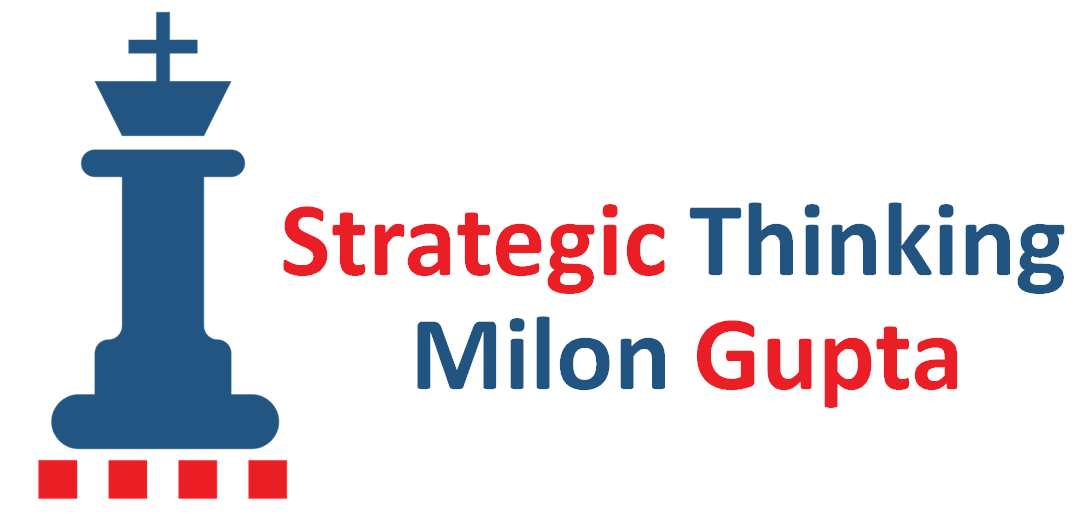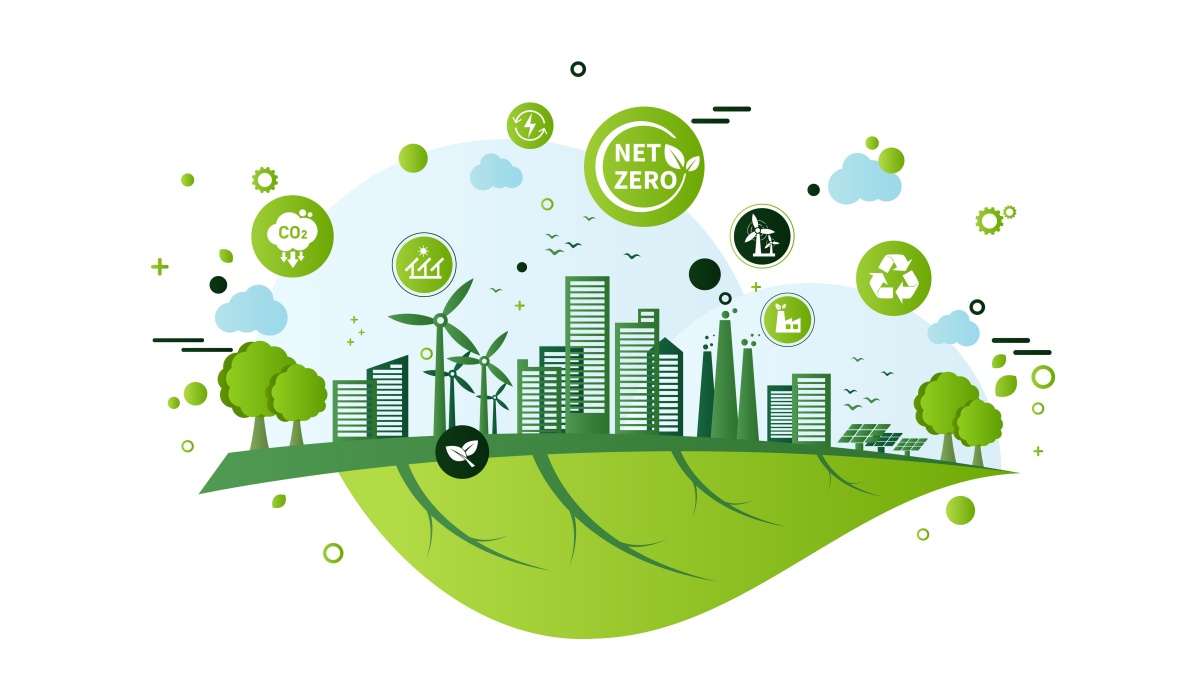Humanity is lagging behind its goals to limit global warming. Net Zero offers the opportunity to still achieve these goals. Companies play a central role in this.
In June 2024, UN Secretary-General António Guterres reminded the global community in urgent words to drastically reduce greenhouse-gas emissions. Only if all countries take a net-zero path can the goal agreed in the Paris Agreement of limiting global warming to 1.5 degrees Celsius compared to pre-industrial times be achieved. If humanity continues to release around 40 billion tons of CO2 equivalents (CO2e) into the atmosphere every year, the remaining CO2e budget of 200 billion tons to achieve the 1.5 degree target would be used up by 2030. To get on the net-zero path, annual CO2e emission reductions of 9% would be required worldwide by 2030. Instead, emissions rose by 1% in 2023.
Like almost all other countries that have signed the Paris Agreement, Germany is not yet on the net-zero path, although according to the German Climate Protection Act it wants to be greenhouse-gas neutral by 2045. For all actors, including companies, this means an urgent need for action. Many companies have already set themselves the goal of Net Zero, but most are still wrestling with the details of their Net Zero strategy.
Before I explain in more detail which Net Zero strategies are available to companies, I would first like to explain what Net Zero actually means.
What Net Zero means
Net Zero is short for Net Zero Emissions. The term describes the state in which a company, region or country emits as much greenhouse gas (GHG) as it removes from the atmosphere through natural or technical processes. The goal of Net Zero is to reduce net emissions of greenhouse gases, measured in CO2 equivalents (CO2e), to zero in order to slow climate change and limit global warming to below 1.5 °C.
The path to Net Zero includes both reducing emissions and offsetting unavoidable emissions through measures such as reforestation, carbon capture technologies or the use of renewable energies.
Some critics of the net-zero concept have complained that companies that have announced net-zero targets want to achieve them to a large extent through compensation measures. In this way, total CO2e emissions could not be reduced to zero in time. On the one hand, many compensation measures, such as planting trees, only have a long-term emission-reducing effect. There is also the risk of double counting and overestimated reduction effects.
These legitimate objections can only be addressed by a rigorous standard for net-zero targets. The most important standard in this area is the Corporate Net-Zero Standard of the Science Based Targets Initiative (SBTi).
The SBTi Corporate Net-Zero Standard
The Science Based Targets initiative (SBTi) was founded in 2015 to help companies set their emissions reduction targets under the Paris Climate Agreement based on science.
In October 2021, SBTi developed the world’s first Net-Zero Standard for companies, the latest version 1.2 of which was published in March 2024. The standard provides companies with a consistent framework to set science-based net-zero targets. It is complementary to the Greenhouse Gas Protocol, which is a widely used de-facto standard that defines the details of greenhouse-gas accounting.
The Corporate Net-Zero Standard defines four key elements:
- A short-term, scientifically based target. The short-term CO2e reduction target has a time horizon of 5 to 10 years.
- A long-term, scientifically based target. The long-term CO2e reduction target is to be achieved by 2050 at the latest.
- The neutralization of any residual emissions. Neutralization means the permanent removal of greenhouse gases from the atmosphere and their storage.
- The reduction of emissions beyond the value chain. This means emission-reducing measures outside of the company’s Scope 1, 2 and 3 that lead to measurable positive effects for people and nature.

SBTi recommends in the standard a five-step process for setting science-based targets:
- Choose a base year:
Companies must establish a base year to track emissions performance consistently and meaningfully over the target period. - Calculate corporate emissions:
Companies must have a comprehensive emissions inventory that covers at least 95% of company-wide Scope 1 and 2 greenhouse-gas emissions and includes a full Scope 3 inventory. - Set target boundaries:
Short-term science-based targets must cover at least 95% of company-wide Scope 1 and 2 emissions. If Scope 3 emissions represent 40% or more of total emissions (Scope 1, 2 and 3 emissions), companies must set one or more emissions reduction targets and/or supplier- or customer-engagement targets.
Long-term SBTs must cover at least 95% of company-wide Scope 1 and 2 emissions and 90% of Scope 3 emissions. - Choose a target year:
Short-term targets must have a target year 5-10 years after the date of submission to the SBTi, while long-term targets must have a target year of 2050 or earlier. - Calculate targets:
Methods for target setting: Science-based target methods are used to calculate short-term and long-term targets based on a mitigation pathway and company inputs. Companies can choose from various methodologies defined in the standard.
There are important differences in setting short-term and long-term science-based targets: When calculating short-term targets, the target ambition depends on the chosen base year and target year. On the other hand, the calculation of long-term targets does not depend on the chosen target year. Companies must use either the Corporate Net-Zero Tool to calculate long-term science-based targets or, in some cases, the corresponding industry-specific tool.
Net-zero strategies for companies
The SBTi Corporate Net-Zero Standard helps companies to set and review scientifically based targets. However, it offers little support for developing net-zero strategies to achieve the desired targets.
Companies that do not want to work out everything themselves from scratch and repeat already known strategic mistakes can use two resources: best practices from companies that are already pursuing net-zero targets according to the SBTi standard and external strategy consulting. The level of ambition and the decisions for the specific design of the net-zero strategy can be determined better and faster by the company management with the help of these resources.
Companies basically have three strategic options:
- Gradual eco-efficiency improvements in the existing business model
- Partial change to the existing business model
- Fundamental change to the existing business model
All three strategic options have their advantages and disadvantages. Which one is best for the respective company depends on various factors. These include, among other things: the CO2e intensity of products and services, the decarbonization status and development of the respective industry, and the expectations of the most influential stakeholders.
Conclusion
The net-zero transformation could be one of the most important transformations in human history. For it to succeed, far more companies need to aim for net-zero emissions by 2050 at the latest on the basis of scientifically sound net-zero targets in order to slow global warming to 1.5 degrees Celsius. To achieve this, companies need a high level of ambition, a robust strategy, and effective governance for implementation.
Developing and adapting net-zero strategies is challenging, and implementation is fraught with uncertainty and risks. Nevertheless, companies are well advised to embark on the net-zero path, as the opportunities outweigh the risks. The expected rise in CO2 prices alone increase the competitive opportunities of companies that consistently decarbonize. Other advantages include higher creditworthiness and employer attractiveness.
Companies that are looking for competent support on their way to Net Zero are welcome to arrange a free initial consultation with me.

